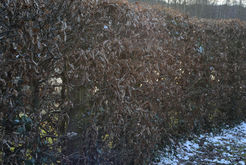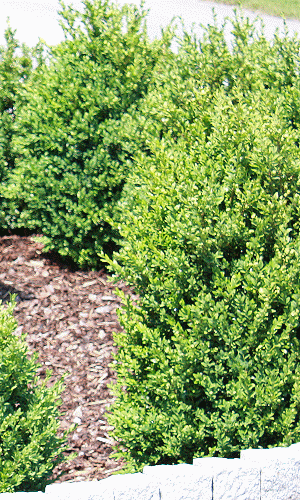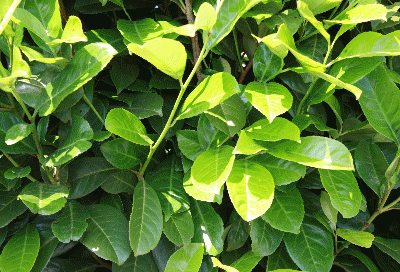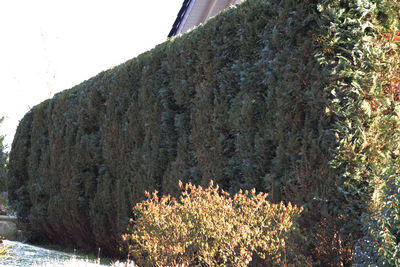Calculate hedge cost, instructions planting hedges - Calculate Now
Choosing the right hedge for the garden
 Hedges play an important role in our gardens today. Whereas in the past they were mostly planted only for fencing, to delimit areas, the hedge is now an integral part of garden design. Their function and task depends on the needs of the garden owners.
Hedges play an important role in our gardens today. Whereas in the past they were mostly planted only for fencing, to delimit areas, the hedge is now an integral part of garden design. Their function and task depends on the needs of the garden owners.
Since man feels most comfortable when he can move unobserved in his green kingdom, hedges are used not only for fencing, but also as a privacy element. And preferably opaque at all times of the year.
But there are other arguments in favor of using a hedge:
In windy regions or higher, colder areas, a hedge provides optimal wind protection against storms, cold and snowdrifts. It slows down the wind and thus no eddies can arise. In the Eifel region, for example, copper beech hedges are traditionally planted in such a way that the house is protected all around or only from a certain side by a house-high copper beech hedge. Often you can see combinations of low and high hedges.
- Windbreak
- Soundproofing
- Very wide hedges can serve as a sound barrier if the property is located in a very noisy area or on a busy road. However, they should not be compared to a complete noise barrier. Hedges have a noise dampening effect. The wider and denser the hedge, the more noise is slowed down.
- Room builder
- In garden design, hedges are very often used to form garden spaces. As a dividing element, they can be beautifully designed by skilful topiary techniques, while being an eye-catcher in their own right. Depending on the choice of plant species, the appearance of this room divider changes with the seasons. For example, the leaves of the copper beech change from a rich green in summer to a beautiful, warm reddish brown in autumn.
- Habitat for animals:
- Whether in the garden or in the open countryside, hedges provide valuable habitat for many animals such as birds and insects. They find food there as well as shelter and a place to breed.
Native or foreign woody plants as hedge plants
 Choosing native woody plants means doing something for the environment. Because native plants with their branch whorls provide important retreats for various animal species such as birds, insects, but also squirrels or the rare dormouse. With their flowering ornaments in early spring or summer, they are a valuable source of food for our bees, bumblebees, butterflies and many other insects. Birds and other small animals benefit from the attached fruit in the fall and winter.
Choosing native woody plants means doing something for the environment. Because native plants with their branch whorls provide important retreats for various animal species such as birds, insects, but also squirrels or the rare dormouse. With their flowering ornaments in early spring or summer, they are a valuable source of food for our bees, bumblebees, butterflies and many other insects. Birds and other small animals benefit from the attached fruit in the fall and winter.
A whole range of native trees and shrubs can be used as hedge plants. One has the option of creating the hedge as a free-growing or trimmed hedge of wild shrubs and flowering shrubs. If the plot of land is large enough and borders on the open countryside, free-growing hedges will create a harmonious landscape.
Many foreign woody plants are used in our gardens today as a matter of course. These include evergreens such as various types of cherry laurel with their dark green, leathery leaves, or conifers such as mock cypress and arborvitae. They are the favorite for year-round opaque hedges and are very easy to keep in shape with regular pruning.
However, the ecological value of these woody plants is very minimal. While these hedges provide shelter, they do not come into question as a food source. Especially in this day and age, the habitat for our native wildlife is becoming smaller and smaller. Therefore, every garden owner should consider how they can do their part to protect the environment.
How to choose the right hedge plants for your garden
Several factors are crucial to making the perfect hedge selection. For example, the size and location of the garden, the garden style and design and, of course, personal preferences of the garden owner must be taken into account.
Natural garden hedges
Mixed hedges of wild shrubs such as dog rose, dogwood, blackthorn and field maple are very suitable for naturalistic gardens. In between, individual evergreen shrubs such as holly or yew fit well. This combination can be grown as a free-growing hedge or as a trimmed hedge.
Trimmed hedges
 Trimmed hedges are the most common form. In addition to enclosing the property, they are usually planted as privacy and windbreaks. Trimmed hedges are particularly suitable for small gardens due to space constraints.
Trimmed hedges are the most common form. In addition to enclosing the property, they are usually planted as privacy and windbreaks. Trimmed hedges are particularly suitable for small gardens due to space constraints.
For terraced gardens, privacy hedges are essential for maintaining privacy. Popular woody plants include yew, privet, copper beech, cherry laurel or arborvitae.
When choosing plants, you should take your time and find out exactly how they grow. Because some plants grow too strongly and are therefore unsuitable for a small garden. Good literature and the information of a good nursery offer valuable assistance.
 Pay attention to good plant quality
Pay attention to good plant quality
Hedge plants should be planted either in autumn from the end of October until the onset of frost and snow, or from early spring from February to April at the most.
It is common to offer deciduous shrubs such as copper beech, privet or hornbeam as bare-root plants up to a certain size. This means that there is no soil ball around the roots. However, this is not a loss of quality, because the plants grow normally when planted and cared for properly. Conifers such as yew, mock cypress or arborvitae are always sold with a root ball.
When buying hedge plants, it makes a lot of sense to go to a certified nursery. These companies belong to the "Bund Deutscher Baumschulen" and undertake to produce plants according to certain quality standards. Here you can be sure that only healthy, strong, well-branched plants with well-formed root system are sold.
Today, most plants are offered in plant pots, also called containers .
The advantage is that these plants can be planted all year round, even in summer. They do not have to be taken out of the ground first, like balled plants, but they are ready for planting. Only in the price this convenience is noticeable, because it is significantly higher. If you need a lot of plants, you should choose the cheaper option.
Costs hedge planting
Prices for hedge plants vary greatly depending on the type of plant, the selected size and the form of sale, such as bare-root or balled. For an average size of 100 - 125 cm, you can go by the following average price for common plant species:
| European beech (Fagus sylvatica): | About 2,20 € (without root ball) ; Plant requirement / m: 4 pcs. |
| Hornbeam (Carpinus betulus): | ca. 2,20 € (without root ball ; plant requirement / m: 4 pcs. |
| Wintergreen privet (Ligustrum vulgare "Atrovirens"): | ca. 2,00 € (without root ball) ; plant requirement / m: 4-5 pcs. |
| Cherry Laurel Herbergii (Prunus laurocerasus "Herbergii"): | Approx. 9,00 € (container) ; Plant requirement / m: 2 pcs. |
| Common Yew (Taxus baccata): | ca. 35,00 € (with root ball) ;plant requirement /m: 3-4 pcs. |
| Tree of life "Brabant" (Thuja occidentalis "Brabant"): | ca. 8,00 € (with root ball) ;plant requirement /m: 3-4 pcs. |
| Field maple (Acer campestre): | ca. 4,00 € (without root ball) ; plant requirement /m: 3-4 pcs. |
For hedges of wild and flowering shrubs it depends very much on how much space is available in the garden. Wild shrubs often go very wide and branch out. Those who love really dense and lush hedges calmly plant 4 plants per meter. Otherwise, 2 plants per meter are sufficient, depending on the plant species.
Starting in the fall, wild and flowering shrubs are offered as root stock, just like hedge plants, and average about €3.00 - €4.00 per plant.
Comparison hedge species
Here you will find a clear list of the advantages and disadvantages of certain hedge types in direct comparison.
Free growing hedge types
| Hedge type: | Free growing hedge from wild shrubs
|
| Benefits: |
|
| Disadvantages: |
|
| Special features: |
|
| Hedge type: | Free growing hedge from flowering shrubs
|
| Advantages: |
|
| Disadvantages: |
|
| Special features: |
|
Pruned hedge species
| Hedge type: | Trimmed hedge from deciduous shrubs
|
| Advantages: |
|
| Disadvantages: |
|
| Special features: |
|
| Hedge Species: | Cut hedge of conifers and evergreen deciduous shrubs
|
| Advantages: |
|
| Disadvantages: |
|
| Special features |
|
Topics: horticulture, garden, hedges, hedge calculator



